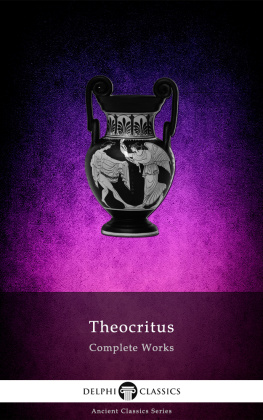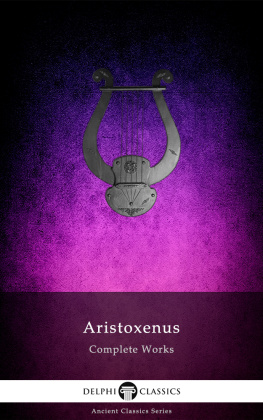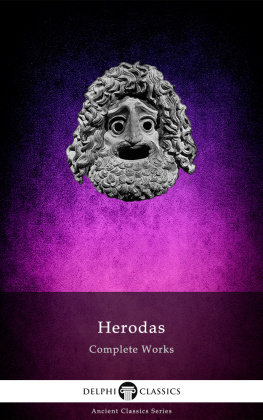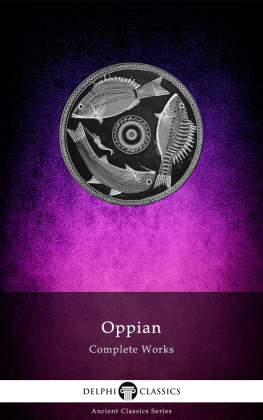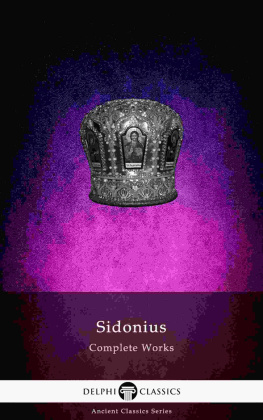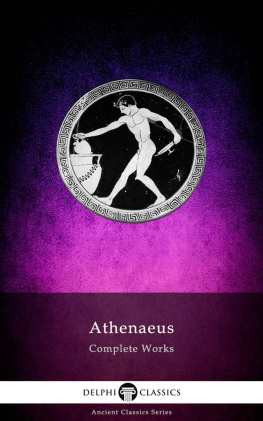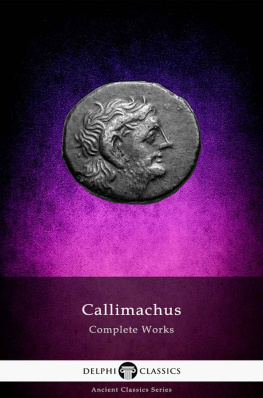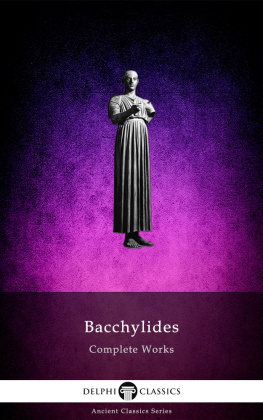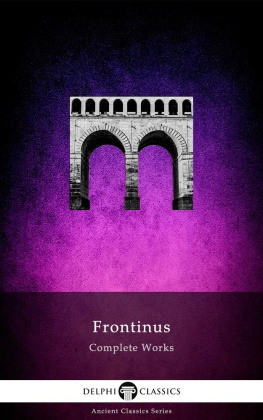
The Complete Works of
THEOCRITUS
(fl. c. 270 BC)

Contents

Delphi Classics 2016
Version 1

The Complete Works of
THEOCRITUS

By Delphi Classics, 2016
COPYRIGHT
Complete Works of Theocritus
First published in the United Kingdom in 2016 by Delphi Classics.
Delphi Classics, 2016.
All rights reserved. No part of this publication may be reproduced, stored in a retrieval system, or transmitted, in any form or by any means, without the prior permission in writing of the publisher, nor be otherwise circulated in any form other than that in which it is published.
ISBN: 978 1 78656 378 1
Delphi Classics
is an imprint of
Delphi Publishing Ltd
Hastings, East Sussex
United Kingdom
Contact: sales@delphiclassics.com
www.delphiclassics.com
The Translations

Ortygia island, Syracuse Theocritus birthplace

Ancient ruins at Syracuse The Temple of Apollo
THE IDYLLS OF THEOCRITUS

Little is known of Theocritus, the creator of ancient bucolic poetry who flourished in the 3rd century BC, except what can be learned from his writings. It is clear that from an early date two collections were made of the Sicilian poets work: one consisting of poems whose authorship was doubtful, yet formed a corpus of bucolic poetry, the other a strict collection of those works, considered to have been composed by Theocritus himself. Artemidorus of Tarsus, a grammarian, who lived in the time of Sulla, is believed to have been the first editor of these poems. He writes, Bucolic muses, once were ye scattered, but now one byre, one herd is yours. An annoymous epigram tells us: The Chian is another. I, Theocritus, who wrote these songs, am of Syracuse, a man of the people, the son of Praxagoras and famed Philina. I never sought after a strange muse. The last line may mean that he wrote nothing but bucolic poems, or that he only wrote in Doric. The assertion that he was from Syracuse appears to be upheld by several allusions in the Idylls .
A bucolic poem is set within a pastoral, rural setting, whilst a mime is set against the backdrop of a town. Theocritusmost famous Bucolics are 1, 6, 7 and 11. In Idyll 1 Thyrsis sings to a goatherd about how Daphnis, the mythical herdsman, having defied the power of Aphrodite, dies rather than yielding to a passion the goddess has inflicted on him. A series of divine figures from classical mythology, including Hermes, Priapus, and Aphrodite herself, interrogate the shepherd about his lovesickness. The poem deals with the classical belief of the folly of mortals that challenge the gods.
Idyll 11 concerns Polyphemus, the Cyclops, who is depicted in love with the sea-nymph Galatea and finds solace in his song. In Idyll 6 , Polyphemus is cured of his passion and naively relates how he repulses the overtures now made to him by Galatea. Idyll 7 describes a Harvest Feast and is generally considered one of the most important extant bucolic poems. The scene is set on the isle of Kos. The poet speaks in the first person and is called Simichidas by his friends. Other poets are introduced under feigned names. Ancient critics have identified the character Sicelidas of Samos with Asclepiades of Samos, and the character Lycidas, the goatherd of Cydonia, with the poet Astacides, whom Callimachus calls the Cretan, the goatherd. Theocritus speaks of himself as having already gained fame and boasts that his songs have been brought by report even unto the throne of Zeus. He praises Philitas, the veteran poet of Kos, and criticises the fledgelings of the Muse that cackle against the Chian bard and find their labour lost. Other persons mentioned are Nicias, a physician of Miletus, whose name occurs in other poems, and Aratus, whom the scholiasts identify with the author of the Phenomena.
Several of the other bucolic poems consist of singing-matches, conducted according to the rules of amoebaean poetry, in which the second singer takes the subject chosen by the first and contributes a variation on the same theme. Suspicion has been cast upon the authenticity of Idylls 8 and on various grounds. However, both poems were in Virgils Theocritus, suggesting that they passed the scrutiny of the editor that formed the short collection of Theocritean Bucolics.
There are three mimes: 2, 14, and 15. In 2 Simaetha, deserted by Delphis, tells the story of her love to the moon; in 14 Aeschines narrates his quarrel with his sweetheart, and is advised to go to Egypt and enlist in the army of Ptolemy Philadelphus; in 15 Gorgo and Praxino go to the festival of Adonis. It may be noticed that in the best manuscript 2 comes immediately before 14, an arrangement which is obviously right, since it places the three mimes together. The second place in the manuscripts is occupied by Idyll 7, the Harvest Feast.

Amphora painting of Odysseus and his men blinding Polyphemus (Eleusis museum) Theocritus describes the Sicilian Polyphemus as being his fellow countryman

Sculpture of Pan teaching Daphnis to play the pipes, found in Pompeii; c. 100 BC

Falconets 1763 sculpture of Galatea, a key figure of Idyll XI

Fragment of Theocritus' Idyll 13, P. Oxy. 694, 2nd century AD
C. S. CALVERLEY VERSE TRANSLATION, 1869

Translated by C. S. Calverley
CONTENTS
PREFACE.
I had intended translating all or nearly all these Idylls into blank verse, as the natural equivalent of Greek or of Latin hexameters; only deviating into rhyme where occasion seemed to demand it. But I found that other metres had their special advantages: the fourteen-syllable line in particular has that, among others, of containing about the same number of syllables as an ordinary line of Theocritus. And there is also no doubt something gained by variety.
Next page
